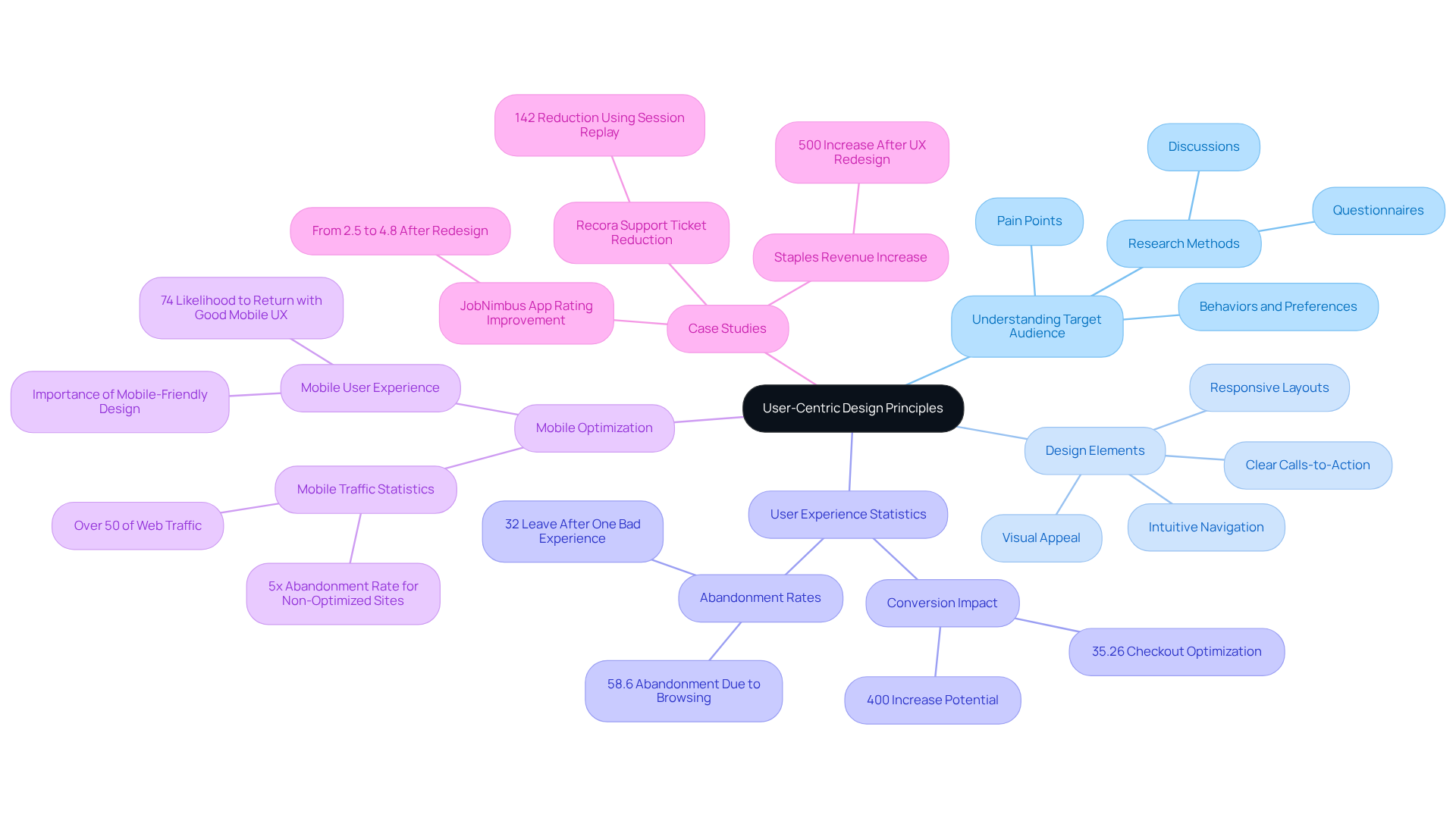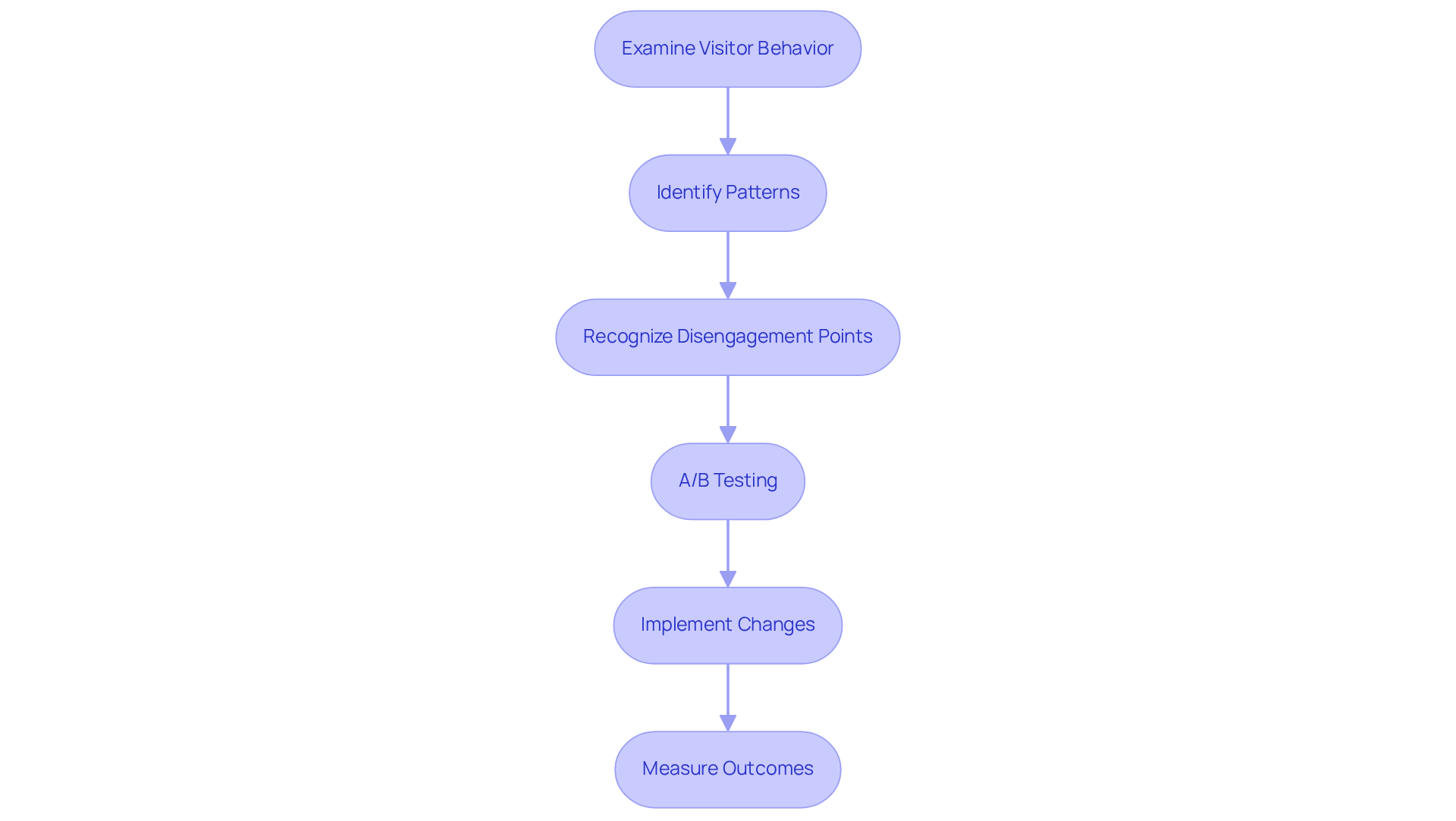
Overview
To significantly boost conversion rates in e-commerce, three pivotal design strategies must be embraced:
- Establishing user-centric design principles
- Leveraging data-driven insights for informed design decisions
- Executing continuous A/B testing and optimization
Prioritizing user experience through tailored designs not only enhances customer engagement but also fosters loyalty. Informed decision-making based on analytics further strengthens this approach, leading to increased sales and conversion rates. Regular testing and optimization are essential for adapting to user needs and preferences, ensuring that designs remain effective and compelling.
Introduction
In the fast-paced world of e-commerce, where customer expectations soar to unprecedented heights, the design of a website can decisively influence a brand's success. With a staggering 88% of consumers unlikely to return after a negative experience, grasping user-centric design principles is not just beneficial; it is essential for boosting conversion rates and cultivating loyalty. This article explores three pivotal strategies that not only enhance the shopping experience but also harness data-driven insights and continuous optimization, positioning e-commerce sites ahead of the competition.
How can businesses ensure their designs resonate with users while navigating the intricate landscape of modern consumer behavior?
Establish User-Centric Design Principles
To effectively boost conversion rates, e-commerce sites must embrace design web ecommerce principles that prioritize understanding the target audience's behaviors, preferences, and pain points. Initiating research with questionnaires and discussions is crucial for gathering insights into what individuals prioritize most in their purchasing process. For instance, a well-organized product page that distinctly emphasizes key features and advantages can significantly enhance customer engagement. This is underscored by the statistic that 88% of individuals are less likely to return after a negative encounter, with 32% of clients abandoning a brand following just one poor experience.
In the design web ecommerce, implementing intuitive navigation, clear calls-to-action, and visually appealing layouts guides individuals seamlessly through the purchasing process. Moreover, ensuring that the layout is responsive and accessible across devices is vital, given that more than half of worldwide web traffic originates from mobile devices. Research indicates that mobile users are five times more likely to abandon a task if the website isn’t optimized for mobile.
By concentrating on design web ecommerce that is user-centered, brands can cultivate a more gratifying shopping journey that not only promotes conversions but also fosters customer loyalty. Businesses that invest in customer experience can potentially earn up to $100 for every $1 spent, demonstrating the substantial financial returns associated with enhancing customer experience. For example, Staples increased their online revenue by 500% after a UX-focused site redesign, showcasing the effectiveness of these principles in practice.

Utilize Data-Driven Insights for Design Decisions
Employing data-informed insights is essential for making well-founded choices that resonate with individuals. Begin by examining visitor behavior through tools such as Google Analytics, heatmaps, and session recordings to identify patterns in how individuals engage with your site. Recognize sections where participants disengage or encounter difficulties, utilizing this information to guide modifications.
For instance, if analytics reveal that users frequently abandon their carts at the checkout stage, consider simplifying the checkout process by reducing the number of steps or offering guest checkout options. Moreover, A/B testing various elements, such as button colors or layout variations, can yield valuable insights into what resonates best with your audience.
By grounding creative choices in data, companies can design web ecommerce strategies that craft more effective and appealing experiences, driving conversions. Successful e-commerce brands, like Amazon, demonstrate that the design web ecommerce process, which includes using Google Analytics, not only informs development choices but also enhances overall user satisfaction and loyalty, ultimately boosting sales.
Furthermore, data-driven organizations are six times more likely to retain customers, and companies that leverage analytics extensively in strategic decisions are 2.5 times more likely to be high performers in their industry. Implementing these strategies can lead to significant improvements, as evidenced by the 36% increase in ROI on ads experienced by Parah Group's clients.
However, it is crucial to avoid common pitfalls in data-driven decision-making, such as relying on flawed data or misinterpreting analytics, to ensure the effectiveness of your strategies.

Implement Continuous A/B Testing and Optimization
Implementing continuous A/B testing and optimization is essential for sustaining high conversion rates in e-commerce. Establishing a culture of experimentation is paramount; this involves regularly testing various visual elements, such as:
- Headlines
- Images
- Layouts
By utilizing A/B testing tools, you can evaluate the performance of different variations and identify which layouts yield the best outcomes. For instance, a company might compare two distinct product page layouts to ascertain which one drives greater engagement and sales.
It is crucial to analyze the results with a focus on statistical significance, ensuring that the p-value remains below 0.05 to confirm the reliability of the findings. Furthermore, consider seasonal trends and client feedback when planning tests, as these factors can significantly influence design effectiveness.
It is also essential to calculate the appropriate sample size prior to conducting tests to prevent premature conclusions. By committing to continuous testing and optimization, while being mindful of common pitfalls like overtesting and P-Hacking, brands can maintain a competitive edge and ensure their e-commerce sites evolve in alignment with user expectations.

Conclusion
Emphasizing user-centric design principles is not just important; it is essential for e-commerce sites that seek to enhance conversion rates. By prioritizing the needs and preferences of the target audience, businesses can craft a more engaging and satisfying shopping experience. This strategic approach not only improves customer interactions but also fosters long-term loyalty, ultimately driving higher revenue.
The article delineates three critical strategies:
- Establishing user-centric design principles
- Utilizing data-driven insights
- Implementing continuous A/B testing and optimization
Each of these elements is vital in crafting a seamless purchasing journey. From understanding customer behavior through analytics to optimizing design through rigorous testing, these strategies collectively contribute to a more effective e-commerce presence.
As the digital landscape evolves, the significance of these design strategies cannot be overstated. E-commerce businesses that invest in understanding their customers and continuously refine their approach will not only boost conversion rates but also create a more resilient and competitive brand. Embracing these best practices transcends mere recommendation; it is a strategic necessity for any e-commerce entity aiming to thrive in an increasingly crowded marketplace.
Frequently Asked Questions
What are user-centric design principles in e-commerce?
User-centric design principles in e-commerce focus on understanding the target audience's behaviors, preferences, and pain points to enhance the shopping experience and boost conversion rates.
How can e-commerce sites gather insights about their customers?
E-commerce sites can gather insights through research methods such as questionnaires and discussions to understand what customers prioritize in their purchasing process.
Why is a well-organized product page important?
A well-organized product page that highlights key features and advantages can significantly enhance customer engagement and reduce the likelihood of negative experiences.
What impact do negative experiences have on customer retention?
Negative experiences can lead to 88% of individuals being less likely to return to a site, with 32% of clients abandoning a brand after just one poor experience.
What design elements are essential for effective e-commerce sites?
Essential design elements include intuitive navigation, clear calls-to-action, and visually appealing layouts that guide customers seamlessly through the purchasing process.
Why is mobile optimization important for e-commerce websites?
Mobile optimization is crucial because more than half of global web traffic comes from mobile devices, and mobile users are five times more likely to abandon a task if the website isn't optimized for mobile.
How does user-centered design benefit brands?
User-centered design cultivates a more gratifying shopping journey, promotes conversions, and fosters customer loyalty, leading to significant financial returns.
Can you provide an example of a successful UX-focused redesign?
Staples increased their online revenue by 500% after implementing a UX-focused site redesign, demonstrating the effectiveness of user-centric design principles in practice.
FAQs











